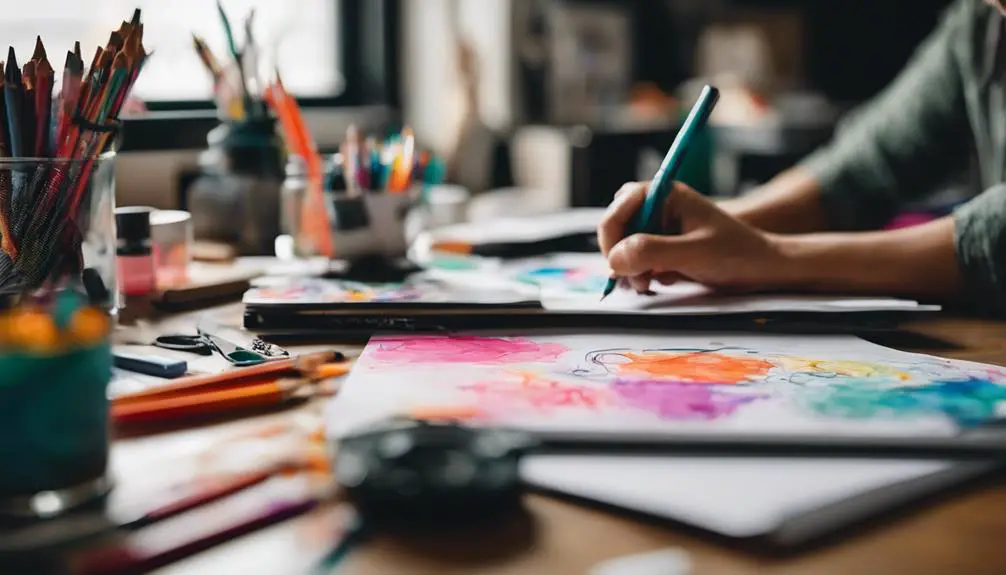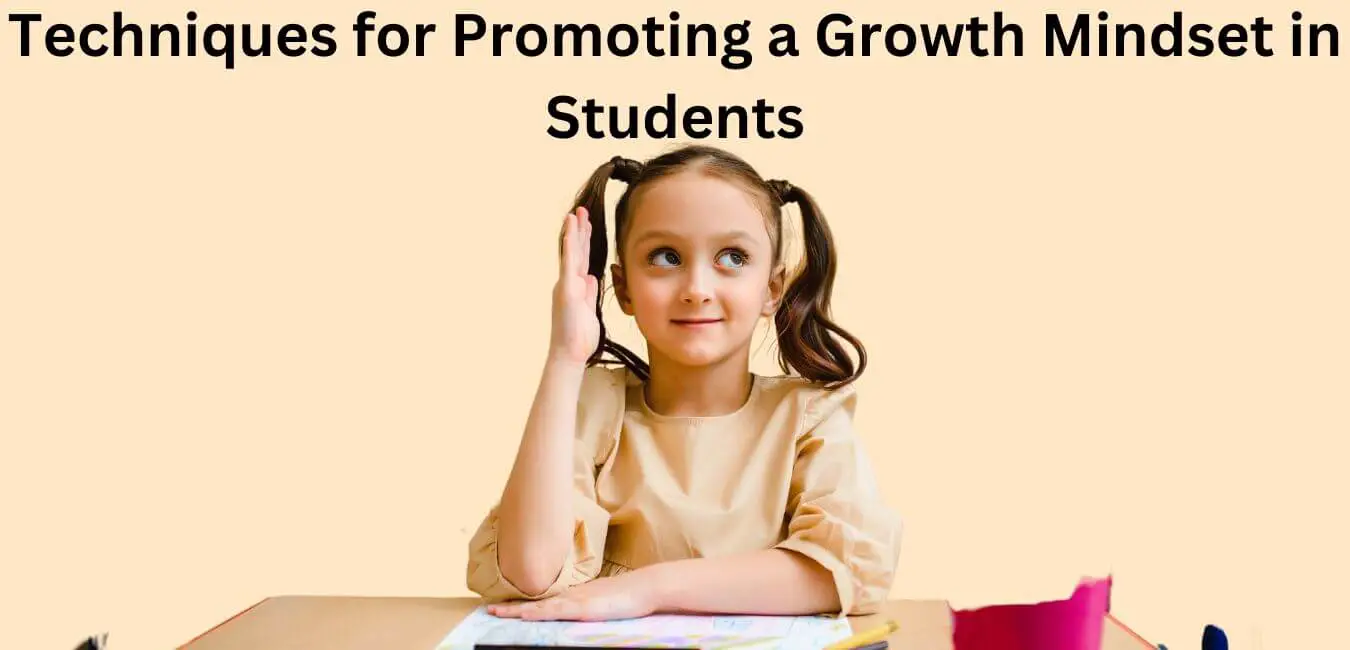Visual aids have a remarkable ability to enhance creativity in various personal and professional contexts. They have the power to transform abstract concepts into tangible visuals, simplifying complex ideas for better understanding and exploration.
Not only do they stimulate visual thinking, but they also promote collaboration and experimentation. Despite their often underestimated role, I have personally witnessed how visual aids can pave the way for innovative solutions.
The key lies in employing specific techniques that truly make a difference and effectively integrating them into our creative processes.
What are the Roles of Visual Aids in Fostering Creativity

Visual aids play a crucial role in sparking creativity. They enhance idea generation and stimulate visual thinking, simplifying complex concepts for easier understanding. Moreover, they promote collaboration, fostering the development of even more innovative solutions.
Imagine yourself exploring a world where visual aids serve as catalysts for creative thinking. By delving into this realm, individuals can unlock their full potential and unleash their imagination. This process not only enhances problem-solving skills but also encourages out-of-the-box thinking.
Picture this: a team gathered around a visual aid, brainstorming, and sharing ideas, each contributing unique perspectives to create something truly groundbreaking. Let’s explore the endless possibilities that visual aids offer in cultivating creativity and innovation.
Enhancing Idea Generation
Visual aids play a pivotal role in boosting idea generation by transforming abstract concepts into tangible representations that ignite creativity.
Techniques like mind mapping have been incredibly beneficial for me in visually organizing my thoughts and uncovering new connections between ideas. This visual layout often leads to fresh insights that I wouldn’t have discovered otherwise.
Doodling exercises serve as a great way to spark my imagination, allowing my mind to wander while my hand creates. Combining this with vision boarding, where I craft a visual collage of goals and inspiration, helps maintain a steady flow of creative energy. It’s remarkable how a simple image can spark a brand-new idea.
Engaging in sketchbook prompts challenges me to think beyond conventional boundaries and explore new perspectives. Participating in various creativity exercises, such as brainstorming sessions with visuals, enables me to generate ideas rapidly and efficiently.
These aids not only serve as tools but also actively cultivate an environment where creativity flourishes. By embracing visual aids, I empower myself—and those I work with—to investigate and innovate in ways that truly resonate.
Stimulating Visual Thinking
Visual aids have a remarkable impact on how we think and foster creativity. They’re instrumental in igniting visual thinking, leading to profound insights and innovative solutions. Incorporating visual elements into our creative processes enriches our journey in the following ways:
- Visual brainstorming facilitates effortless idea connections.
- Creative visualization brings concepts to life before our eyes.
- Artistic inspiration sparks new directions in our creative endeavors.
- Imaginative discovery propels us to explore uncharted territories and expand our horizons.
Engaging in visual problem-solving opens up a realm of possibilities that may have otherwise gone unnoticed. The act of visually sketching or mapping out ideas liberates us from conventional thought patterns. It’s intriguing how a simple diagram or image can trigger a chain reaction of thoughts, leading to unexpected breakthroughs. Embracing these visual strategies not only enhances personal creativity but also empowers others to follow suit. Together, we can cultivate an innovative culture that benefits all those involved.
Encouraging Collaborative Brainstorming
Collaborative brainstorming becomes even more effective when visual aids are incorporated, as they enhance idea sharing and ignite group creativity.
From my experience, these tools boost team dynamics by injecting more excitement into brainstorming sessions. They create a welcoming atmosphere where everyone feels encouraged to contribute freely.
When I introduce visualization tools like mind maps or flowcharts, I see how they encourage creative teamwork among colleagues. These visual aids not only organize thoughts but also promote collaboration, allowing team members to see the whole picture and build upon each other’s ideas.
It’s truly remarkable how visual stimulation can inspire fresh solutions that verbal discussions mightn’t uncover alone.
Simplifying Complex Concepts
When approaching complex concepts, I find that visual aids are invaluable tools for breaking down information into easily understandable parts, facilitating comprehension and fostering innovation. Through the simplification of abstract ideas, these aids enable me to enhance understanding and nurture creativity.
Here are some ways visual aids can streamline information:
- Using visuals for clarity helps to elucidate intricate ideas, making them more accessible to a wider audience.
- Visual representations facilitate the visualization of concepts, promoting collaboration and active engagement.
- Simplifying complexity transforms overwhelming data into manageable insights, paving the way for innovative solutions.
- Incorporating visual elements into learning environments fosters creativity and enhances the learning experience.
Boosting Memory Retention
Visual aids not only simplify intricate concepts but also play a crucial role in enhancing memory retention, facilitating the recall and application of creative ideas later on. Integrating visual stimulation into my learning process elevates cognitive processing, ultimately solidifying concepts in my memory.
When I incorporate visual aids into brainstorming techniques, I notice a significant improvement in idea generation. It’s intriguing how these tools bolster my creativity and streamline the retention of knowledge. Here’s a brief overview of how visual aids influence memory retention:
Utilizing brainstorming techniques with visual aids boosts idea generation efficiency.
Enhanced cognitive processing leads to improved memory retention.
Visual aids support creativity techniques, fostering a deeper understanding of concepts.
Inspiring Innovative Solutions
Visual aids play a crucial role in sparking creativity and fostering innovative solutions. When engaging with images, diagrams, or other visuals, my mind is stimulated to think imaginatively and gain fresh perspectives.
Here’s how visual aids can be a catalyst for inspiration:
- Innovative problem solving: Visuals offer diverse perspectives, paving the way for unique solutions to challenges.
- Creative brainstorming: Synthesizing ideas becomes more fluid, enhancing group discussions and idea generation.
- Artistic exploration: Immersing in various art forms ignites inventive thinking and pushes boundaries.
- Design thinking: Creative visualization techniques help map out concepts and strategies effectively.
Incorporating visual aids not only enhances my own creative process but also enables me to facilitate collaborative environments for others. By creating a visually inspiring atmosphere, I empower individuals to unleash their potential and work together towards impactful solutions. Embracing these tools is essential for driving forward-thinking ideas and making a positive impact.
Facilitating Storytelling Techniques
Storytelling techniques truly come to life when we strategically incorporate visual tools. These elements enhance character development by giving faces to personalities, making the narrative more captivating and memorable. When portraying a character’s journey, images can vividly showcase their growth, adding layers to the story.
Visual aids are essential in emphasizing plot twists, creating anticipation and surprise. By visually capturing pivotal moments, we keep the audience engaged and at the edge of their seats. Furthermore, using maps or illustrations to describe settings helps the audience immerse themselves in the world being portrayed.
Integrating visuals into dialogue dynamics clarifies conversations and relationships between characters. Speech bubbles or captions depicting dialogues help viewers understand interactions better. Ultimately, visual aids facilitate the exploration of themes by connecting abstract ideas to tangible images, deepening the audience’s comprehension of the message.
In my experience, these storytelling methods, bolstered by visual aids, foster an environment where creativity thrives, satisfying the audience’s craving for connection and insight.
Creating Engaging Presentations
In crafting engaging presentations, integrating visual aids not only captures attention but also ignites creativity and enhances comprehension. The strategic use of design elements can elevate a dull presentation into a captivating journey.
Emphasizing slide organization, color schemes, and thoughtful image choices can enrich audience interaction and ensure our messages resonate profoundly.
Here are some essential factors I consider when creating impactful presentations:
- Slide Organization: A neat and structured layout aids in maintaining focus and clarity.
- Color Selection: Opting for cohesive color palettes can evoke emotions and enhance visual appeal.
- Image Choices: Relevant visuals amplify messaging, making it more memorable and relatable.
- Engaging the Audience: Including interactive features encourages participation and sustains audience interest.
Supporting Diverse Learning Styles
Visual aids are essential for nurturing creativity and catering to diverse learning styles, making complex concepts more accessible. Incorporating interactive activities is key to engaging learners based on their preferences. For example, hands-on projects bring abstract ideas to life, while digital resources enhance engagement with dynamic visuals.
Utilizing multi-sensory experiences helps reach students who excel in different modes of learning, such as seeing, hearing, and touching materials. Tailoring approaches through diverse techniques ensures that all learners feel included in the educational journey. Inclusive strategies have the power to transform a classroom, fostering collaboration and creativity among students.
Flexibility in teaching methods allows for customization to meet the unique needs of each learner. Personalized solutions not only empower students but also cultivate a sense of belonging. Embracing these varied strategies makes learning more engaging and meaningful.
Visual aids serve as a bridge between different learning styles, enabling everyone to unleash their creative potential and share their perspectives effectively.
Promoting Critical Analysis
Visual aids are instrumental in encouraging critical analysis among students, fostering a more creative and thoughtful engagement with information. When incorporating visuals into my teaching, I notice that students are more motivated to explore topics deeply, leading to a more profound comprehension.
Here are some ways in which visual aids can support critical analysis:
- Examining different perspectives: Visuals can showcase various viewpoints, prompting students to explore different angles of a subject.
- Challenging preconceptions: They often highlight contradictions within information, urging learners to reconsider their existing beliefs.
- Assessing evidence: Visual representations of data can simplify complex information, enabling students to evaluate the credibility and relevance of evidence.
- Encouraging inquiry: By illustrating diverse scenarios, visual aids inspire students to question ‘why’ and ‘how,’ encouraging them to move beyond surface-level understanding.
In my experience, the use of visual aids creates a conducive environment for students to engage critically. They aren’t just consuming information but rather analyzing, questioning, and actively participating in their learning journey. This approach not only enhances creativity but also empowers students to think independently and contribute meaningfully to their communities based on well-informed perspectives.
Visualizing Abstract Ideas
Creative expression can greatly benefit from the use of visual aids, as they’ve the power to transform abstract ideas into tangible concepts that ignite creativity and innovation.
Visualizing emotions through sketches or diagrams can serve as a bridge between feelings and comprehension, allowing for a deeper understanding.
When grappling with abstract concepts, I often turn to creative visualization techniques to gain new perspectives on these ideas.
For instance, during brainstorming sessions, I enjoy creating conceptual illustrations to visually represent my thoughts. These illustrations not only help clarify my ideas but also stimulate out-of-the-box thinking.
By envisioning different possibilities, I can explore various outcomes and refine my vision effectively.
This approach proves particularly effective in collaborative settings, as it encourages teamwork and enables each individual to contribute their unique insights.
Sharing visual aids establishes a common language that goes beyond words, making complex ideas more easily digestible.
Ultimately, visual aids empower us to breathe life into abstract concepts, fostering a culture of creativity that benefits our communities and nurtures growth.
Encouraging Experimentation and Play
I often find that incorporating visual aids sparks a sense of experimentation and play, leading to the blossoming of ideas in unexpected ways. When engaging with visual elements, I foster a space for creative exploration that nurtures an environment where playful experimentation thrives, stimulating not only my imagination but also opening doors to new possibilities.
Here are some ways in which visual aids contribute to this process:
- Visual inspiration sparks innovative thoughts and connections.
- Artistic freedom is encouraged, allowing for unique expressions without constraints.
- Imagination is enriched, becoming an integral part of the creative journey.
- Collaborative environments are enhanced, promoting shared experimentation.
Building Emotional Connections
Visual aids play a crucial role in cultivating emotional connections that enhance the creative process. They not only encourage experimentation and play but also tap into shared human experiences, nurturing empathy and enabling profound connections. Through visual storytelling, individuals can connect on a deep level, fostering personal introspection and artistic expression.
Visual metaphors further deepen emotional resonance, providing powerful channels for exploration and expression. Carefully chosen images have a significant emotional impact, sparking conversations and transforming concepts into captivating narratives. These aids allow individuals to engage with subject matter in a more profound manner, opening doors to new perspectives and insights.
Conclusion
In my experience, the use of visual aids has a profound impact on the creative process.
For instance, in a recent project brainstorming session, I introduced mind mapping to my team. This technique not only ignited innovative ideas but also promoted collaboration, enabling everyone to freely contribute their thoughts.
By simplifying intricate concepts and encouraging playful experimentation, we were able to develop a distinct marketing strategy that resonated with our target audience.
Visual aids serve as more than just tools for thinking; they establish emotional connections and propel us toward unexplored possibilities.













